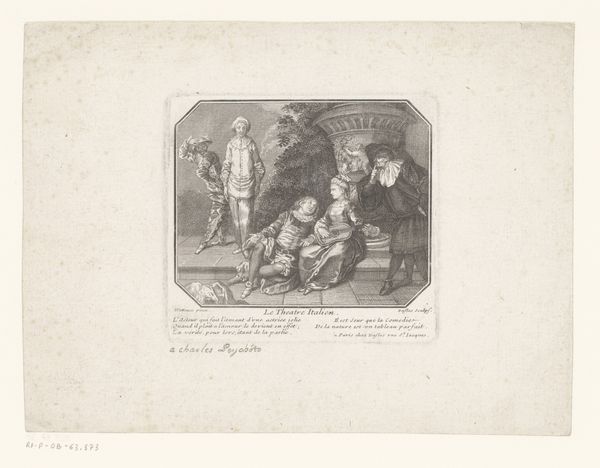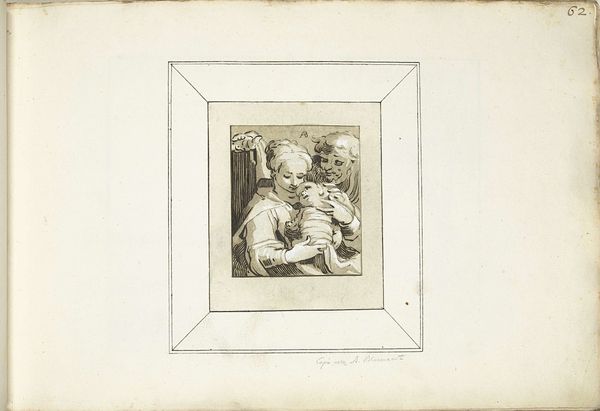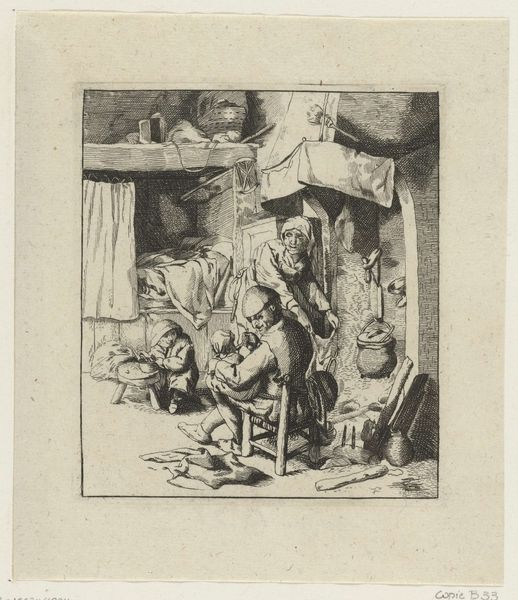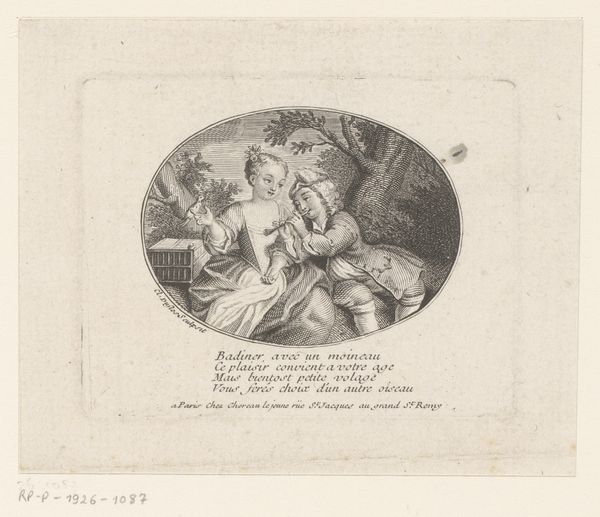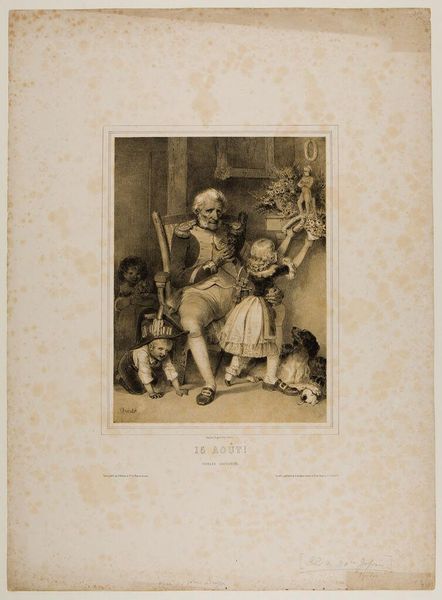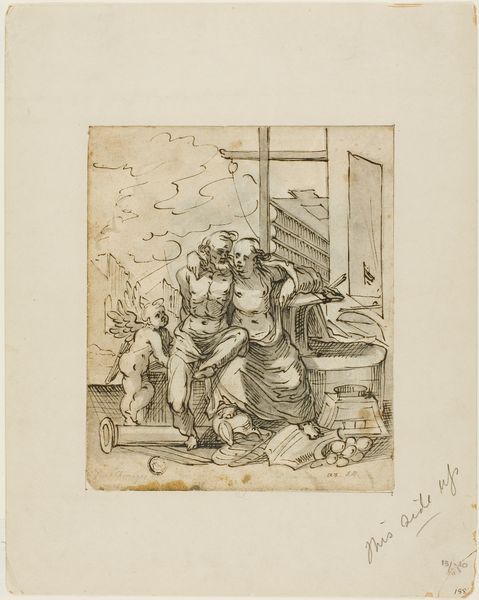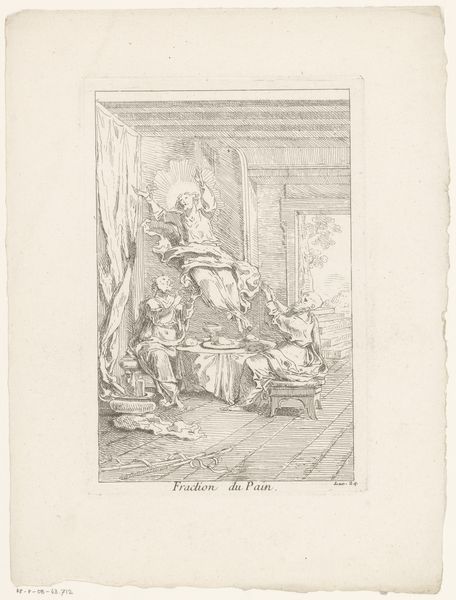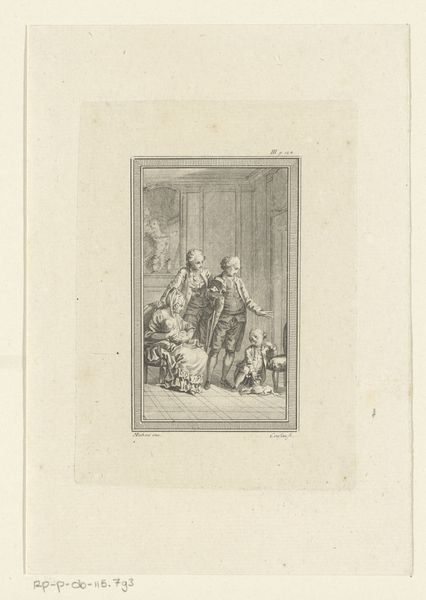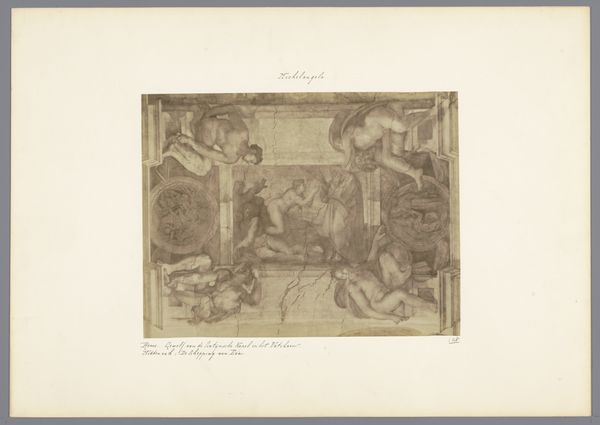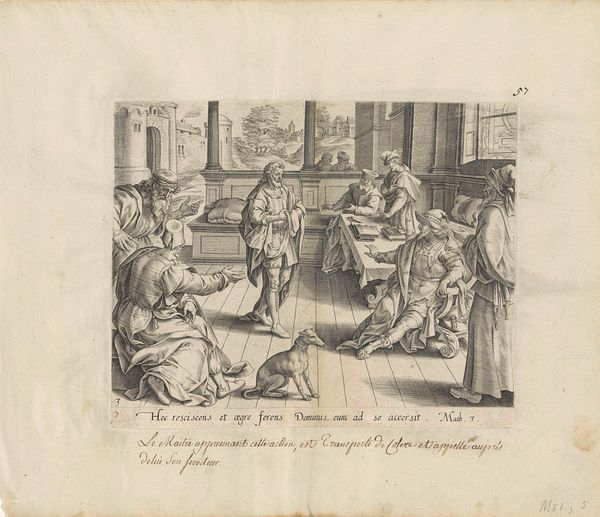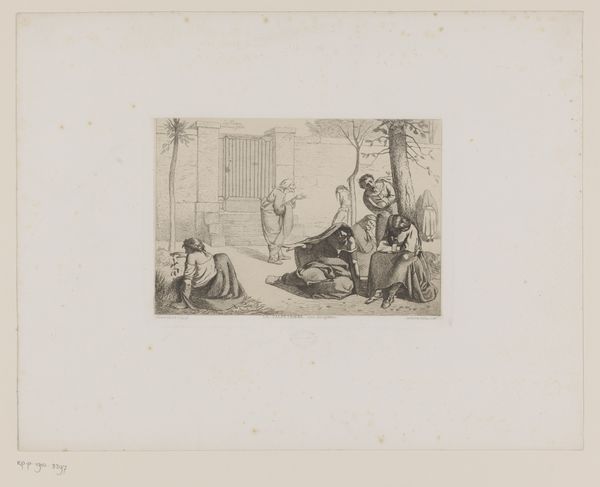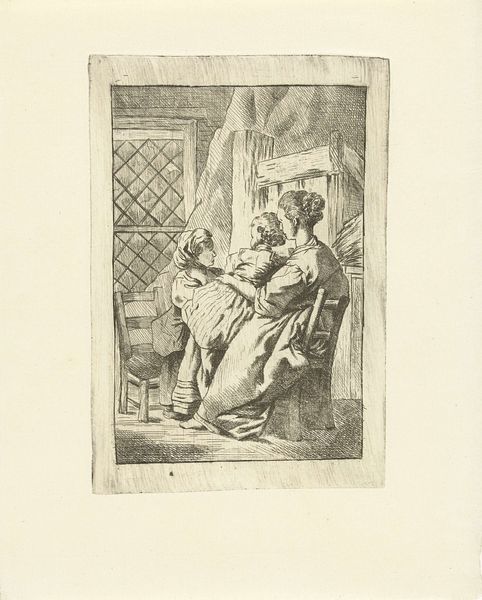
drawing, paper, ink
#
drawing
#
narrative-art
#
baroque
#
figuration
#
paper
#
ink
#
genre-painting
#
history-painting
Dimensions: diameter 150 mm, height 243 mm, width 360 mm
Copyright: Rijks Museum: Open Domain
Curator: Let’s turn our attention to "Isaak zegent Jakob," or "Isaac Blessing Jacob," a drawing created between 1615 and 1620 and currently held in the Rijksmuseum. It's attributed to Gerard ter Borch the Elder. Editor: It has an intimate quality to it. I immediately notice the almost muted color palette, rendered in ink on paper; the artist's hand is definitely present. Curator: Ter Borch captures a key moment from the Book of Genesis. Jacob, disguised as his brother Esau, kneels before his blind father Isaac to receive the blessing meant for the elder son. This narrative had a potent meaning in the Dutch Republic. Editor: The focus on the texture of the garments, though, hints at something deeper. It seems Ter Borch spent quite some time focusing on the materiality of everyday life here. Also note the oval crop emphasizing a contained, domestic space. Curator: Yes, the detailed depiction of clothing and household objects invites viewers to engage with the scene on a personal level. Artists during this period often used biblical stories to mirror contemporary moral dilemmas, and this theme had obvious socio-political importance in a rapidly changing society. Editor: Right. Thinking about it from a production angle, drawings such as these served many functions: preparatory studies, teaching aids, and even collectibles in their own right. The relative ease and cost-effectiveness of ink and paper, versus say oil paint, makes these images very accessible, creating an intriguing interplay of availability and implied status of the owner, no? Curator: Absolutely. Furthermore, consider the market for these drawings at the time, sold individually or bound in albums. Their consumption reflects changing tastes and patterns of collecting. Ter Borch clearly aimed to produce art with both historical relevance and intimate domestic appeal, cleverly combining religious narratives with scenes accessible to the merchant class. Editor: The emphasis on accessible and reproducible formats demonstrates the artist's shrewd understanding of how art finds its place in the material and cultural life of the Netherlands. I leave contemplating about its reception. Curator: A very appropriate question to end this consideration!
Comments
No comments
Be the first to comment and join the conversation on the ultimate creative platform.
